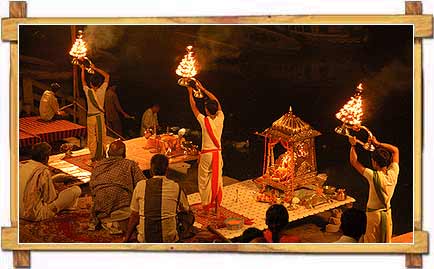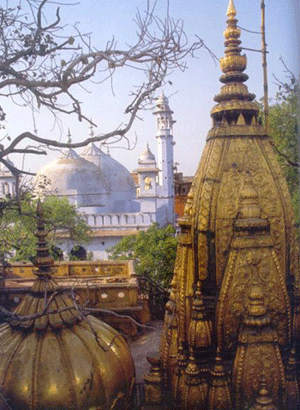In the beginning of the 11th century, Saint Gorakhnath(popularly known as baba Gorakhnath) established the 'Gorakhnath Ka Tila' in the Maldahiya area of Varanasi. Baba Gorakhnath belonged to the Nath community which believed in the 'yogini Kaul Marg'. The people of this community believed in the nine spiritual men or Nine Natha's who provided spiritual direction to the community.According to the followers of this sect, Lord Shiva himself was the first 'Nath' from whom the community originated.Towards the beginning of the 10th century, Matsyendranath worked in spreading the spiritual tenets of this sect.
In the 11th century , baba Gorakhnath followed in the footprints of Matsyendranath and made valuable contribution in spreading the Nath sect.By virtue of his loving nature and selfless service, he provided direction to the contemporary society at large. The key aspect of this belief system was that, it did not distinguish between the rich and poor, wak and strong and did not subscribe to elaborate ritualistic beliefs. He travelled across India to propagate this new thought. He also elaborated on this new sect and its beliefs in two treatises, the 'Gorakhshasiddhanta' and the 'Yogamarg'.
According to baba Gorakhnath, when a disciple manages to awaken his 'Kundalini', he attains a state of perpetual happiness and enlightenment and he merges with the omnipresent and omniscient Shiva.
Baba Gorakhnath set up his 'math'(or mutt) in maldahiya in Varanasi which came to be known as 'Gorakhnath ka Tila'. In this math, the followers worship Shiva, Matsyendranth and the 'Charan Paduka' or the wooden slippers of Baba Gorakhnath. The math also runs a school that serves to spread education among the poor masses. Baba Gorkahnath also established the Kali math near Lakshmikund, where he himself installed the idol of goddess Kali -one of the forms of mother goddess Shakti.
The prominent saints of the Nath sect were believed to practice the 'Abhed Marg', a system of strict rules to attain enlightenment. They did not follow or believe in the contemporary society's rules and beliefs. They even adopted a way of life that was considered outrageous by the contemporary hindu society.
Friday, April 2, 2010
Subscribe to:
Comments (Atom)













